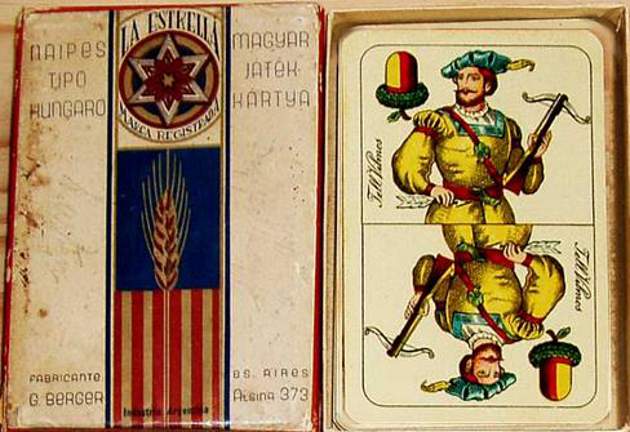From Germany to Hungary – the story of Tell cards

Playing cards has become one of the most popular activities in Hungary by the 1840s. The number of card-makers increased rapidly, and the games were often mentioned in contemporary works of literature and press. Playing cards was popular among aristocracy, soldiers, students and vagabonds. Most of the cards and games in Hungary were created based on games coming from Vienna. It gained a wider audience only in the second half of the 19th century.
The German playing card deck consisting of 32 — sometimes 36 — cards is called “magyar kártya” (Hungarian card) in Hungary. The name of this set differs by regions. Hungarians used to call it “Swiss-German card”, “Swiss-Hungarian card” or “Helvetian card”, depending on the time period and geographical location. It was only called “Hungarian card” from a point on in the 20th century.
The peculiar fact is, though, that, while the cards actually depict Swiss folk heroes, this type of deck was never made or used in Switzerland.
The “Hungarian” playing card decks use the same four colors as their German predecessor from the 15th century: the hearts (“reds” in Hungarian), leaves (“greens”), bells (“pumpkins”) and acorns. The figures are the following: VII, VIII, IX, X, under-knave, over-knave, king and deuce. Some versions contain VI cards as well, adding four extra cards to the deck. Sometimes the six of bells functions as a Joker under the name “Welli”, as Wekerlekos.hu highlighted.
The Swiss folk heroes on the under-knaves and over-knaves. Photo: Wikimedia CommonsThe origin of the cards is hard to determine. Some people claim that it came from Switzerland, others named Germany as its place of origin. Even the famous American expert Hargrave stated that they are from Switzerland, but, as we mentioned earlier, he was proven wrong, according to epa.oszk.hu. It was also an interesting question why a Hungarian card set depicts Swiss folk heroes.
The first cards using the characters of William Tell’s story were created in the 1830s.
The original idea was to depict the heroes of the Hungarian revolution of 1848-’49, but the Austrian censorship would definitely not let that happen.
So card-maker József Schneider drew the anti-German freedom fighters of Switzerland on the cards. His pictures are from the Biedermeier art style, which was popular in Hungary in the early 19th century. The name of the artist is marked on the seven of acorns: “Zu finden bei Joseph Schneider in Pesth” (“To be found by József Schneider in Pest”).

The characters depicted on the under-knaves and over-knaves were borrowed from Friedrich Schiller’s drama William Tell from 1804, which was performed in Hungary as well after its first presenting in 1827.
The cards by Schneider were popular, because the heroes reminded people that the Swiss managed to defeat the Habsburgs some centuries before. These sets were confiscated after crushing the revolution in 1849, leaving no trace in literature or museums for the later generations. This type of card appeared in England at that time, probably due to the large number of Hungarian immigrants who fled from the vengeance of the Austrians.
The set was later published again in the Austro-Hungarian Monarchy.
Piantik owned the monopoly rights, and the factory contributed to the spreading of the cards in Austria, Slovenia, Croatia, Czechoslovakia and South Tirol.
Though the Monarchy fell apart after the end of the Great War, the production of the Tell card continued in Hungary, Austria and Czechoslovakia. Multiple versions were created until the end of World War II.
The most popular games played using this set of cards are Ulti, Sechsundsechzig, Ferbli, Sedma and Lórum.
Ce: bm
Source: epa.oszk.hu, Wekerlekos.hu





